
Written in collaboration with the gait specialists from Gait Happens
Are you unsure if the way you’re walking is good for your body? Good walking is sustainable, so learning to walk with healthy gait and alignment means you can walk without pain for decades to come! Read this post for a break down on functional walking patterns and how to achieve them.
How to Walk
We learn to walk as infants, but at some point over the years it becomes muddy for a lot of us. Don’t believe me? Take off your shoes and walk a mile barefoot outside. If you’ve had an upbringing that involved lots of shoes and lots of sitting, you’ll probably find it’s not as intuitive as you thought!
Here at Anya’s Reviews we talk about how footwear affects the body. Barefoot shoes are designed to let you move as if barefoot, and are a wonderful way to help reclaim the natural movement patterns most of us lose with age. But just changing your shoes is often not enough. A lot of people (myself included) find themselves feeling awkward after switching to completely flat, thin, and flexible shoes.
Want to take a detour and learn more about shoes? Click the link below! Want to stick to walking tips? Keep reading!
This article is all about how to walk pain free for lifelong mobility – whether that’s in barefoot shoes, no shoes, or any shoes. So without further ado, here is your crash course on how to walk with a natural gait.
Beginner Walking Skills
Once you start digging into it, walking can feel complicated. There’s a lot to think about! We like to begin with the basics and work up from there. Here are some walking tips that are easy to start with and have a lot of bang for your buck.
Go Barefoot

One of the most effective ways to improve your posture and gait is to walk barefoot. All the nerves in your feet communicate with the rest of your body and provide reflexive stability and control – AKA you get improved movement without even having to think about it! It’s also a great way to expose any dysfunctional patterns because you’ll feel things more when barefoot. When it is safe to do so, walking barefoot outside over a variety of terrain is a powerful training tool and we recommend doing it often to improve your walking. Just be smart and stick with a dose that feels right for you.
Use Your Butt!

Another walking tip that has a lot of oomph is to use your glutes when you walk.
Rather than rely on gravity and fall forward with each step, we want to use our own power to move forward. Practice using your butt muscles while you walk by pushing back with your standing leg in order to propel yourself forward. You should feel your glute muscles engage! If you’re like me and too often focus your energy forward, you probably have a tendency to think of walking as a LIFTING of your swinging leg. But instead you want to think of it as a PUSHING OFF with your standing leg. Pushing off makes the other motions reflexive and require less energy.
Plant that foot, then push it behind you! Glute powered walks are stable – you can stop at any point without falling over. You are grounded and your legs move underneath you.
Zero drop shoes help keep your weight back over your heels so it’s easier to walk like this. By contrast, heeled shoes tend to push your weight forward and can lead to quad dominance (walking with your quad muscles instead of your glute muscles).
Heel Strike
When walking continuously over flat and level ground, it’s important to make contact with the fleshy pad of the heel first to set off a chain of momentum that is both efficient and stable. This is called heel striking (as opposed to forefoot striking). Despite the name, it isn’t a dramatic slamming down of the heel. You step on the heel first (the squishy part, not the bony back end), and then quickly disperse weight through the entire foot.
If you’re having a hard time stepping without slamming you might need to bring your foot closer to your center of gravity. The good news is, walking barefoot will improve your proprioception so you can better control your landing AND it leads to thicker skin.
When out in nature on varied terrain, a functional foot will adapt to the surface of the ground and surrounding environment – so you don’t need to always force a heel strike if the situation demands something else.
Intermediate Walking Skills
When you have some of the basics mastered, you might want to consider these more nuanced features of good gait. These are skills that take time to develop, and the first step is awareness! The supporting drills linked here will help you hone the skills.
Leg & Foot Alignment
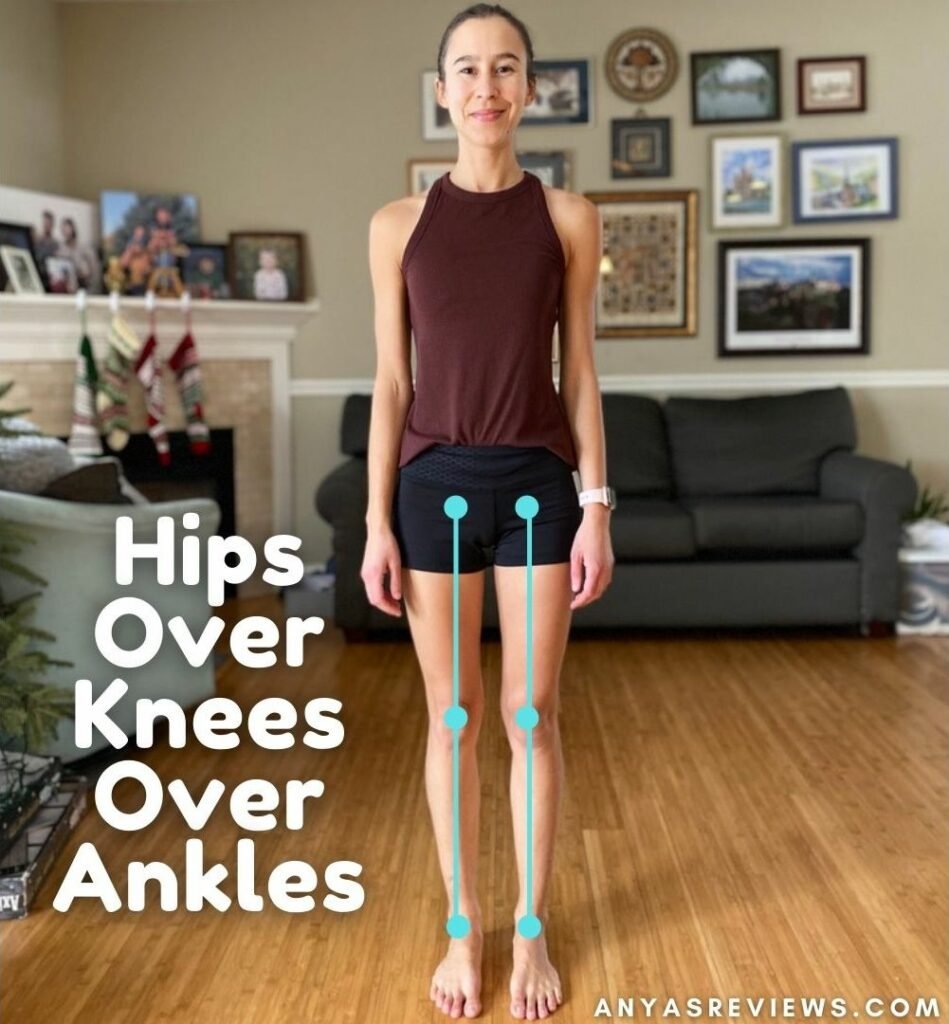
Good alignment of your lower extremities increases efficiency and promotes even wear and tear on the joints.
Your hip joint (which is right in the crease where your femur actually connects to your pelvis, not the bony part on the outside) should be stacked over your knees and ankles, with thighs, shins, and feet facing straight forward as much as possible. But be careful here! About 25% of the population has torsion (twisting) in the bones of the leg making it inadvisable to force this position. So place your legs and feet as straight forward as feels good, but don’t force it. Especially if pointing your feet and legs straight forward causes your knees and hips to fall inward, or you experience any pinching. In that case, it’s ok to let your feet point out a little.

Leg Alignment Drills
You can support good leg alignment with controlled articular rotations (CARS). To do this you isolate a joint, e.g. the ankle, and then very slowly take it through its full range of motion. CARS are an excellent tool for mobilizing and balancing the joints in your lower extremities! Over time that work will make it easier to stack your joints one over the top of the other. Here are a few demonstrations:
Movement is for Every Body: The name of the movement game is to figure out what you can do in your own body. Understanding that all cells in your body need to move opens up limitless possibilities for moving more and moving better, despite physical limitations you may have.
You might need to heavily modify moves shown here to fit your body and ignore the voices telling you to do more than you should. Or maybe you need to ignore the voices telling you that you can’t move! Believe you can improve, but be willing to start somewhere (even a low point) and keep with the progression.
Walk Over The Big Toe
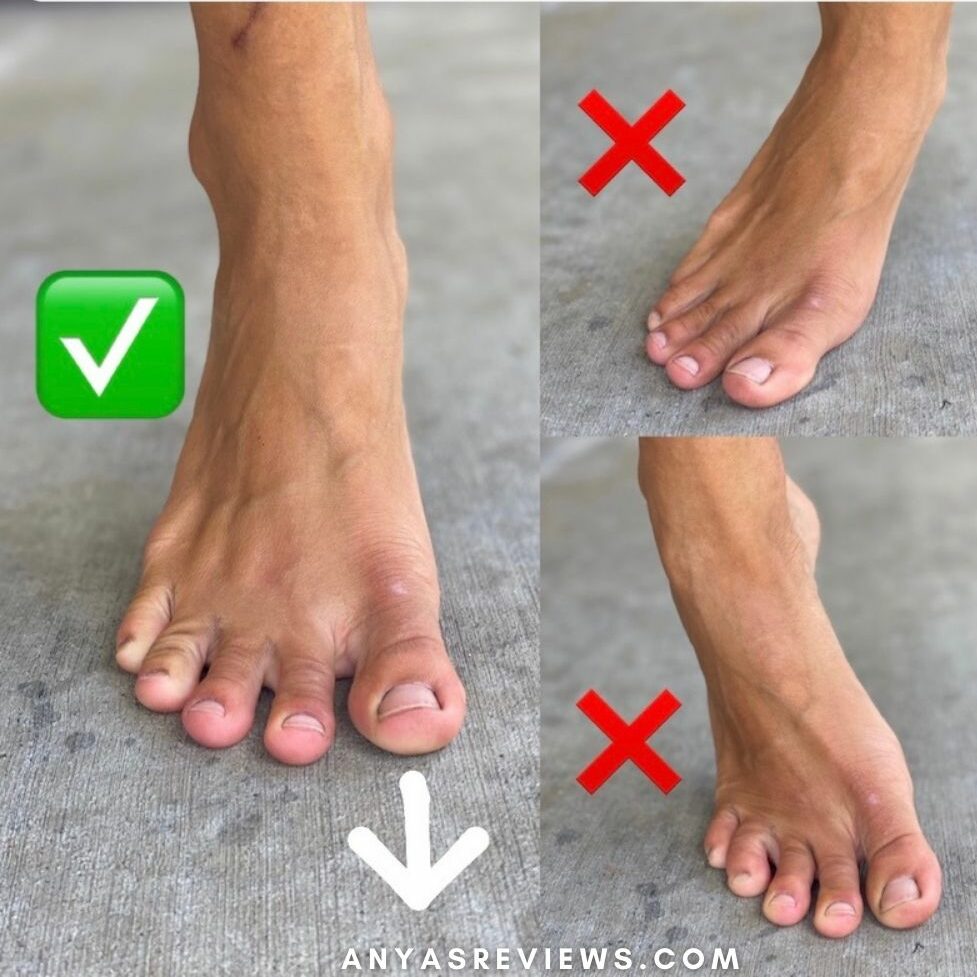
The big toe is meant to play a significant role in the gait cycle. When your big toe bends it pulls that ropy tissue under your foot (the plantar fascia), tightening it and raising your arch. When the big toe is bent like this and the plantar fascia is stretched the foot is a rigid lever – stiff to allow for energy transfer to propel you forward. This whole thing is called the windlass mechanism, and it is an essential component of a sustainable gait. Walking directly over your big toe makes this magic happen!
Stiff shoes that pinch your toes together don’t allow you to walk like this, which can aggravate an untold number of parts in your body and lead to issues like bunions, plantar fasciosis, hallux rigidus, and more farther up the chain. Getting yourself into foot-shaped shoes can improve your foot alignment so you can take advantage of these built-in efficiencies.
Foot Alignment Drills
In addition to better footwear, you can start aligning the toes immediately with a few simple exercises! Here you can find my favorite foot exercises that can really make a difference in your foot function. And here is one more I’ve grown to love recently.
The Pelvic List

Once you start moving a lot of people want to let the hip collapse on the swinging leg, resulting in a bobbing back and forth of the hips while walking. This is called frontal plane leakage, and is both inefficient and stressful on the joints. Instead, you want to use the lateral (outside) hip muscles of the standing leg to keep your pelvis straight and slightly lifted like pictured above. We spend the majority of our time walking on one leg, so single leg balance is super important, and yet many of us don’t have the strength for it! That is when inefficiencies start creeping in.
Single Leg Balance Drill
You can train the lateral hip muscles and pelvis so they don’t get collapse while walking. Try this hip hike drill to train lateral hip stability! And you can find a few more exercises I often use for this skill here.
Advanced Walking Skills
The following few tips are the icing on the cake. They can really make a difference if you find yourself getting back or neck aches on long walks, but might be difficult to master if you haven’t considered the other skills in this article.
Neutral Pelvis

Our pelvic position plays a vital role in how well we are able to use our hips and control how our legs move through space. Imagine your pelvis is a bowl of water. We want to keep that water in the bowl as our legs move. If we live and move with our pelvis tilted forward (water spilling out of the front of the bowl) we are more likely to over stride or take a long step which can increase the forces from the ground into our joints. If we lift and move with our pelvis tilted backward (water spilling out of the back of the bowl) we are more at risk for problems with our low back, hip flexors, hips, etc.
Essentially, you want the bony protrusion in the top of your hip to be lined up with your pubic bone. When you walk into a room both of those bones should enter at the same time.
Neutral Pelvis Drill
As your body becomes more mobile and stable you will be able to control your pelvic position more easily. Here is a drill you can do before walking to promote pelvic control!
And if you’d like a few more exercises, I have my favorites for balancing the pelvis included here.
A Note About Breathing:
Our diaphragm is one of the most under utilized muscles when it comes to whole body stability. We want to be able to breathe 360 degrees and expand our full ribcage in order to reach that potential. Try this out! Wrap your hands around your waist so your thumbs are on your low back and your fingers are in front just below your ribcage. Take a deep breath in through your nose and try to feel expansion into your whole hand and all of your fingers. Are your thumbs moving as much as your fingers are? Is one side expanding more than the other? It may be something you can work on! Adding in a few minutes of breathing each day (demonstrated in this video) can make a big difference.
Upper Body Positioning
Walking is a whole body endeavor, so your upper body positioning can impact the rest of you. When walking, try to avoid the extremes of being hunched over and staring at the ground, or flared with an arched back.

You’ll walk best with your head stacked over your shoulders and your ribs pointing down in a stacked position. When you are aligned from the top down you are better able to keep your legs underneath you and move from a stable core. This means more control and less impact!
Upper Body Alignment Drill
This exercise from Gait Happens targets the muscles needed to hold your upper body in an aligned position. I also start every day with a segmented Cat Cow to open up the spine so I can control it better. This video here is a good demonstration of how to do that.
Overview Of The Gait Cycle
As you work on individual components of walking with the drills listed in this article, these skills will start to come together on their own. The tissues of the body take time to adapt, so don’t be discouraged if you aren’t able to do all of this all at once! But here is an overview of the gait cycle for you to check in with yourself.
- Use your butt muscles to propel you forward
- Try not to arch your low back as your leg travels behind you. If this is difficult, try shortening your stride. Your tissues will lengthen over time.
- Keep the heel of your standing leg down as long as possible.
- Keep your hands free and swinging at your side so that your shoulders counter rotate while you walk.
- Make contact with the ground at the fleshy pad of your heel. Not the bony back end.
- When lifting the standing leg (that is now behind you) point your toes down to the ground and not turning out to the side.
- Try to walk 100-120 BPM for optimal efficiency – Find a song at that tempo and walk to it!
As you might be noticing, walking is a whole body endeavor. You can support whole body mobility by releasing your fascia with simple tools. Jill Miller has created tons of resources on how to do this on her YouTube channel. Find yourself a ball or foam roller and you can start mobilizing while watching your favorite show.
More Gait & Alignment Resources
Natural human movement is both complicated and incredibly simple. If you’ve been moving dysfunctionally for years, this might be an overwhelming amount of things to think about. But once you start checking in with your body and making a few changes, things start clicking into place quickly. Pick one thing to focus on, master it, and then consider the next thing.
For more info, Gait Happens offers the following:
- Foot Function Membership
- Individual Consultations
- Foot Health 101 E-course
- Free social media content
- E-mail Subscription with weekly tips
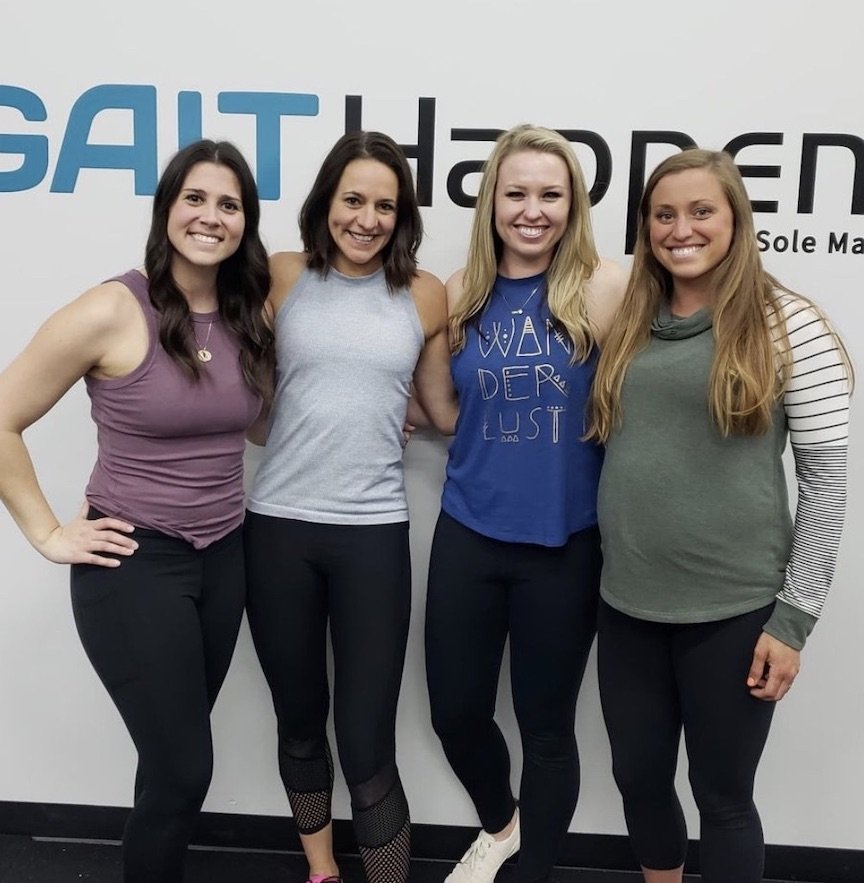
Our passion at Gait Happens lies in treating the foot and analyzing how the human body develops compensatory movement patterns in order to keep walking and running. We empower people to move more efficiently and improve their quality of life by exposing and correcting those compensations.





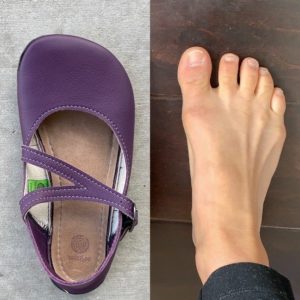





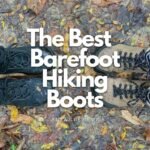

7 thoughts on “Walking 101: How To Improve Your Gait For Lifelong Mobility”
Hi Anya,
Happy New Year!
Thanks for another great article. It’s so comprehensive, I know I’m going to keep coming back to it. Not to mention referring friends and family to it 🙂
Elaine
Hi Anya,
Have you heard of Nordic walking? It uses poles to incorporate upper body and is a cardio fitness thing. Everything I’ve found online so far shows people using an awfully long stride. Just makes me wonder if it’s really a good thing. Seems like one’s hips could be overworked, with the exaggerated stride. Something else to research…
Interesting! I haven’t heard about Nordic walking. Having a long stride is not inherently wrong, but most people have such tight hips and quads that they can’t accomplish it without compensating.
Hey Anya,
Great article. Any advice or tips on best way to turn directions or change directions while walking. I am on my feet a lot at and constantly turning corners and making sharp / quick turns?
Preston!
Hey Preston,
Unfortunately I don’t know a whole lot about that, except that it takes more energy than walking continuously! If it’s bothering your ankles you could practice ankle CARS and calf raise variations. Otherwise you might want to talk to the experts at Gait Happens directly.
Why do you recommend a heel strike over a forefoot strike? I find a forefoot strike more natural for me and it feels more stable when I am barefoot but I have a hard time with it in some shoes.
There is some debate about it yes, but we believe the biomechanics of the human body suggest that heel striking while walking is best. We refer to the work of biomechanists and physical therapists like James Earls, Jay Dicharry, Irene Davis, Daniel Lieberman (evolutionary anthropologist) and Katy Bowman who have all come to the conclusion that human walking is best done with a heel strike when over basically level ground (walking on uneven terrain with less stability might sometimes require forefoot walking).